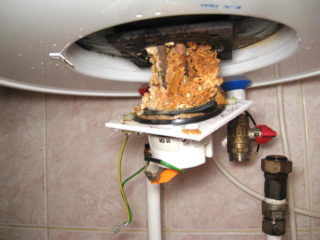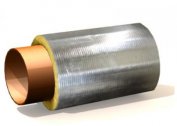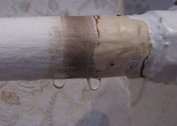In homes and summer cottages where owners live only during the summer, all engineering systems must be prepared in advance for winter. If the device is not used for a long time, you need to take care of its competent storage.
For what reasons it is necessary to drain the water from the boiler
Many manufacturers indicate in the operating rules that it is not recommended to leave the boiler empty for a long time, unless there are good reasons for this.
If the air temperature in the room is minus, the water in the water heater may freeze. Ice is formed not only in the tank, but also in the pipes. This leads to damage and tearing. It is impossible to leave water in the water heater during shutdown and long non-use.
If the device works all year round, it must be cleaned regularly. Manufacturers recommend the procedure once or twice a year. The frequency will depend on the quality of the water. For cleaning, you will have to drain the water from the boiler.
During use, dirt accumulates in the tank, scale accumulates on the heating elements. It begins to act as a heat insulator. The longer the owner of the heater does not clean the heating elements, the larger the scale layer becomes. Because of this, the energy consumption increases by at least 20%. The liquid begins to heat up much more slowly.
It is necessary to completely drain the liquid if replacement of the magnesium anode is required. The procedure is carried out according to the standard scheme. Before carrying out work, the tank must be completely empty.
If a breakdown occurs, repair work on replacing the heater or any other malfunctions should be carried out with an empty tank.
There are a number of signs by which it can be determined that the boiler needs repair or cleaning:
- the pressure becomes weak;
- the boiler heats longer than usual;
- the device makes an uncharacteristic noise;
- fluid from the safety valve does not drip.
You also need to follow the preventative cleaning schedule. For each model, it is determined by the manufacturer and is prescribed in the instructions for use.
The procedure for draining the water from the boiler
Draining the heater fluid is considered a simple procedure, but it is not recommended to carry it out without studying the instructions. Each brand may have its own differences.
Most often, according to the operating rules, the manufacturer does not allow interference with the system until the end of the warranty period. If the heater has a complex structure, do not disassemble it yourself to prevent breakage.
Standard connection
The standard type of connection is recommended if a tee with a tap is installed in the pipe section from the heater to the fuse valve. The fluid from such a system merges simply, without the use of additional tools.
The standard connection diagram is as follows:
- heater;
- water tap;
- valve fuse to prevent fluid from returning from the system;
- tee designed to drain;
- hot and cold water tap;
- mixer;
- shut-off valve for shutting off hot liquid.
If the entire connection diagram is observed, it will take no more than 10 minutes to drain:
- The boiler is disconnected from the network, the fluid supply is shut off.
- Hot water opens and is drained from the tube through a mixer. The valve is left open during draining so that air enters the system.
- A drain hose is put on, the drain valve opens.
- As soon as the tank is completely empty, the shut-off valve is shut off.
If air slowly enters the system, draining may take several hours. To remedy the situation, you can connect a compressor to the hose. He will pump air into the system. It will be possible to turn on the boiler in the socket only after it is completely filled.
Advanced Connection Type
With this connection scheme, the tee is installed on two sides: at the inlet and outlet of the water. To drain the water in such a water heater, you must perform the following steps:
- the crane at the entrance is blocked;
- put on a drain hose;
- pressure is relieved by opening the mixer.
The hose is sent to a pre-prepared container and the air supply valve is opened.
Simplified connection method
The discharge procedure according to the simplified method is as follows:
- fluid supply to the tank is blocked;
- the remaining hot water is discharged from the hose, for this you need to open the mixer;
- on the safety valve, the drain flag is rotated.
The complexity of this method lies in the duration of the process. To drain quickly, it is necessary to ensure the flow of air into the tank. It practically does not pass from the mixer. You can solve the problem by removing the hot water pipe.
Emergency Water Removal
Often there are situations when it is necessary to quickly drain the fluid from the heater. In this case, proceed as follows:
- the supply of cold water is completely blocked;
- access to warm water to the boiler;
- pressure inside must be compared with external;
- the hose is removed;
- tee with relief valve opens.
Be sure to pre-prepare containers for collecting fluid.
Drain the remaining water
The device of the boiler makes it difficult to completely drain the liquid. Its part still remains inside. To drain the water from the heater completely, you must perform the following steps:
- the bulk is merged in any of the ways;
- a decorative cover is unscrewed from the bottom of the tank, then the connection to the signal lamp is disconnected;
- electrical wires are disconnected;
- the flange is unscrewed clockwise, it is necessary to support the heater;
- take out the heater from the tank very carefully so as not to damage the walls.
A large scale layer may form on the heating element, which will interfere with its exit from the tank. If resistance is felt in the process, you need to move the part carefully from left to right.
Procedure for flushing and disassembling the boiler
If a large amount of sediment has formed in the tank, it can be removed manually manually. To carry out the procedure, you need to remove the rubber gasket. It is designed to provide insulation between the tank and the flange. The gasket must also be thoroughly cleaned.
The walls and bottom are washed under pressure. This is best done with a hose. To clean the water heater, cold water must be connected to the hot outlet. Inside the tank, a tube designed to draw in hot fluid comes to the very top. As soon as water enters the tube, it is sprayed and rinses the walls. You need to run water in several stages to clear all the dirt from the bottom of the tank.
If there is an unpleasant odor in the tank after cleaning, you must treat the walls with a solution of vinegar. To do this, sponge is impregnated with a solution, wind it on a long stick and wipe the insides.
TEN is also first cleaned manually. The upper layer of plaque is removed with a knife, then the heating element must be soaked in citric acid to remove residues. To do this, you need a plastic bottle, a hole is made in it in diameter, which coincides with the heater.Hot water and citric acid are poured into the bottle. The item is left in the resulting solution for a day. After processing, the softened layer is removed.
As soon as all cleaning activities are ready, the boiler must be assembled, checked for leaks. After that, you can connect the device to the mains.
Is it necessary to leave water when disconnected
If the owner of the heater is not in the country every day or is forced to leave the apartment for a long time, it is recommended to drain the liquid from the boiler to the very end. If there is no regular circulation in the tank, the water begins to stagnate and acquire an unpleasant odor. In addition, tank parts that are constantly in the water undergo gradual destruction. Proper operation and storage will help extend the life of the equipment.
The need to drain water from the boiler during idle time also depends on the quality of the liquid. If it is a central water supply, it goes through preliminary treatment, but if it is a well, there are a lot of bacteria and microorganisms in such water. They begin to multiply rapidly. If you have a forced long idle time, you need to completely drain the liquid, and then start a new one.
All heating devices operate on the same principle, but the cleaning procedure may vary. It is recommended to carefully study the operating instructions, observe the cleaning rules in accordance with the schedule proposed by the manufacturer. Proper care of the heating device to extend its life.








